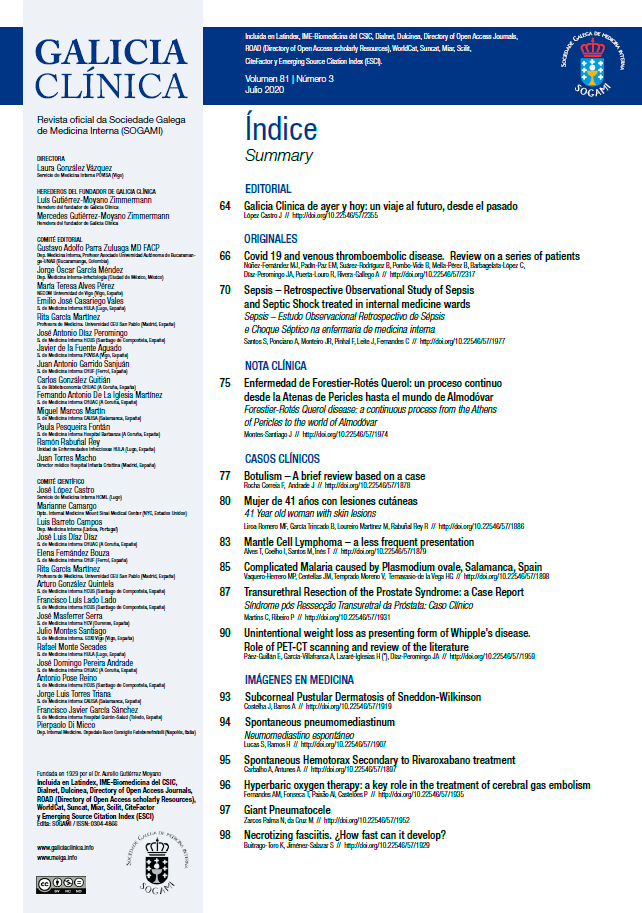Abstract
Introduction: Sepsis and septic shock are very relevant in clinical practice. Most studies focus on the treatment in Intensive Care Units. Outside these units, the reality is largely unknown. The aim of this study is to epidemiologically characterize sepsis and septic shock patients admitted at internal medicine wards. Material and Methods: Retrospective observational study, involving patients admitted to internal medicine wards with the diagnosis of sepsis/septic shock during a year Results: A total of 308 patients were included in the study. 53% were female, with higher levels of comorbidities. Almost 40% were in septic shock, at admittance. Mortality rate was 29,87%. Overall, microbiologic documentation was possible in 92.2% of the cases, with higher prevalence of infection in the urinary (52.6%) and respiratory (34.8%) systems. Initial antibiotic therapy was appropriate in 50% of cases. Previous antibiotic therapy (OR 3.84; IC95% 2.4-6.2; 0.0001) and bedridden status (OR 3.15; IC95% 1.7-5.8; 0.0002) were independent risk factors to antimicrobial resistance.Galicia Clínica by Sociedad Gallega de Medicina Interna is licensed under a Creative Commons Reconocimiento-NoComercial-SinObraDerivada 4.0 Internacional License.
Created from galiciaclinica.info.


